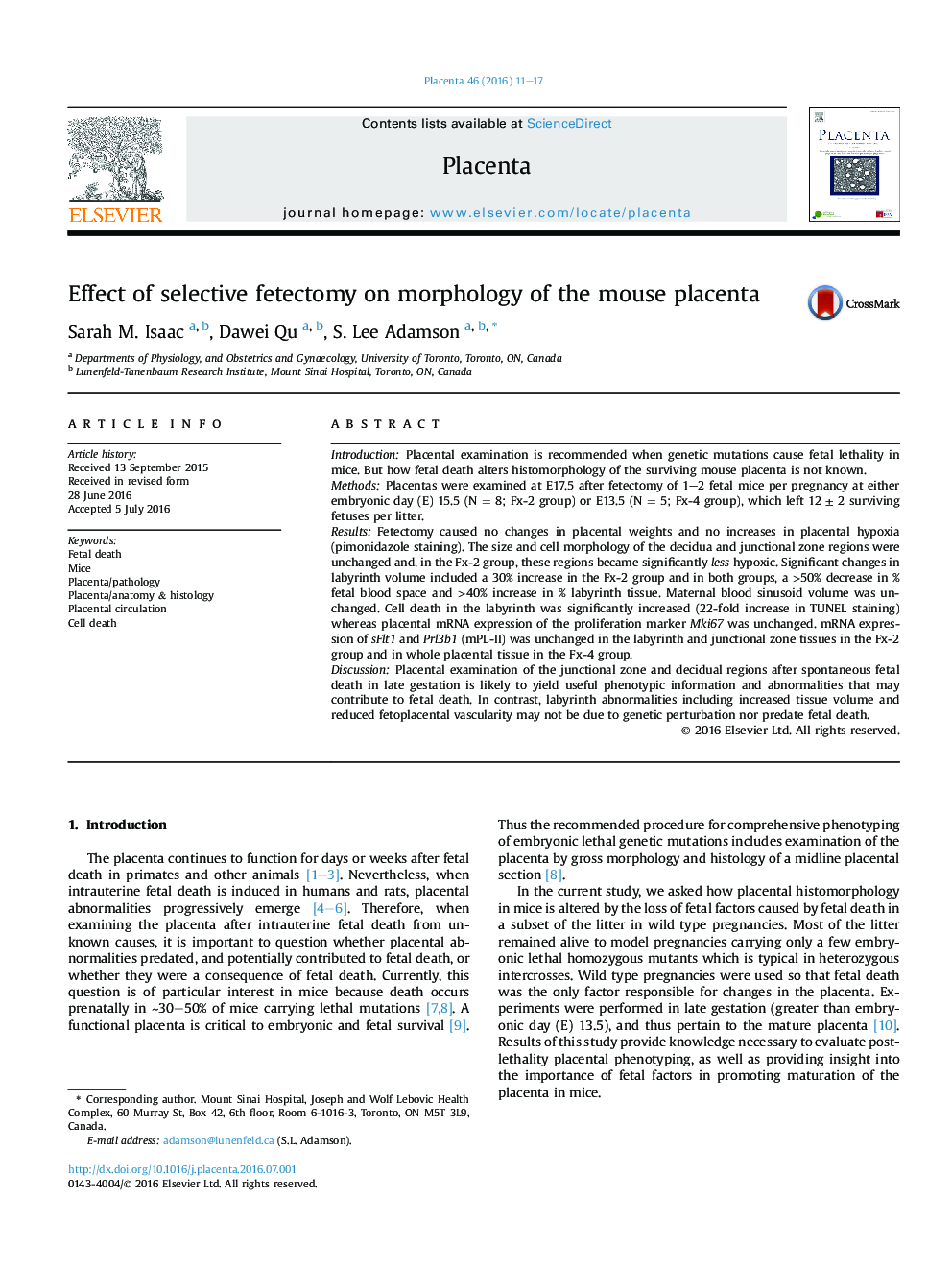| Article ID | Journal | Published Year | Pages | File Type |
|---|---|---|---|---|
| 5894130 | Placenta | 2016 | 7 Pages |
â¢Studied effect of fetectomy on placental histomorphometry in mice.â¢Fetus atrophied but placenta did not diminish in size or become more hypoxic.â¢Labyrinth volume % of fetoplacental blood space decreased and % tissue increased.â¢Minimal effect on decidua/junctional zone morphology and on mRNA of selected genes.â¢Placental phenotyping can yield useful information even up to 4 days after fetal death.
IntroductionPlacental examination is recommended when genetic mutations cause fetal lethality in mice. But how fetal death alters histomorphology of the surviving mouse placenta is not known.MethodsPlacentas were examined at E17.5 after fetectomy of 1-2 fetal mice per pregnancy at either embryonic day (E) 15.5 (N = 8; Fx-2 group) or E13.5 (N = 5; Fx-4 group), which left 12 ± 2 surviving fetuses per litter.ResultsFetectomy caused no changes in placental weights and no increases in placental hypoxia (pimonidazole staining). The size and cell morphology of the decidua and junctional zone regions were unchanged and, in the Fx-2 group, these regions became significantly less hypoxic. Significant changes in labyrinth volume included a 30% increase in the Fx-2 group and in both groups, a >50% decrease in % fetal blood space and >40% increase in % labyrinth tissue. Maternal blood sinusoid volume was unchanged. Cell death in the labyrinth was significantly increased (22-fold increase in TUNEL staining) whereas placental mRNA expression of the proliferation marker Mki67 was unchanged. mRNA expression of sFlt1 and Prl3b1 (mPL-II) was unchanged in the labyrinth and junctional zone tissues in the Fx-2 group and in whole placental tissue in the Fx-4 group.DiscussionPlacental examination of the junctional zone and decidual regions after spontaneous fetal death in late gestation is likely to yield useful phenotypic information and abnormalities that may contribute to fetal death. In contrast, labyrinth abnormalities including increased tissue volume and reduced fetoplacental vascularity may not be due to genetic perturbation nor predate fetal death.
